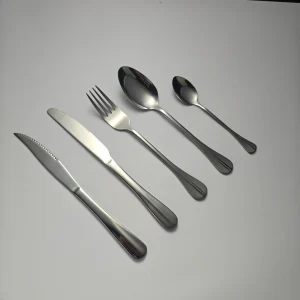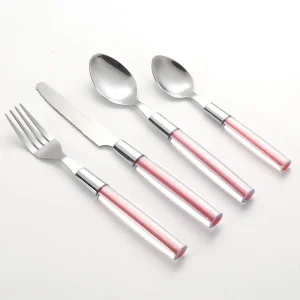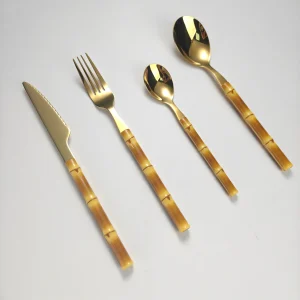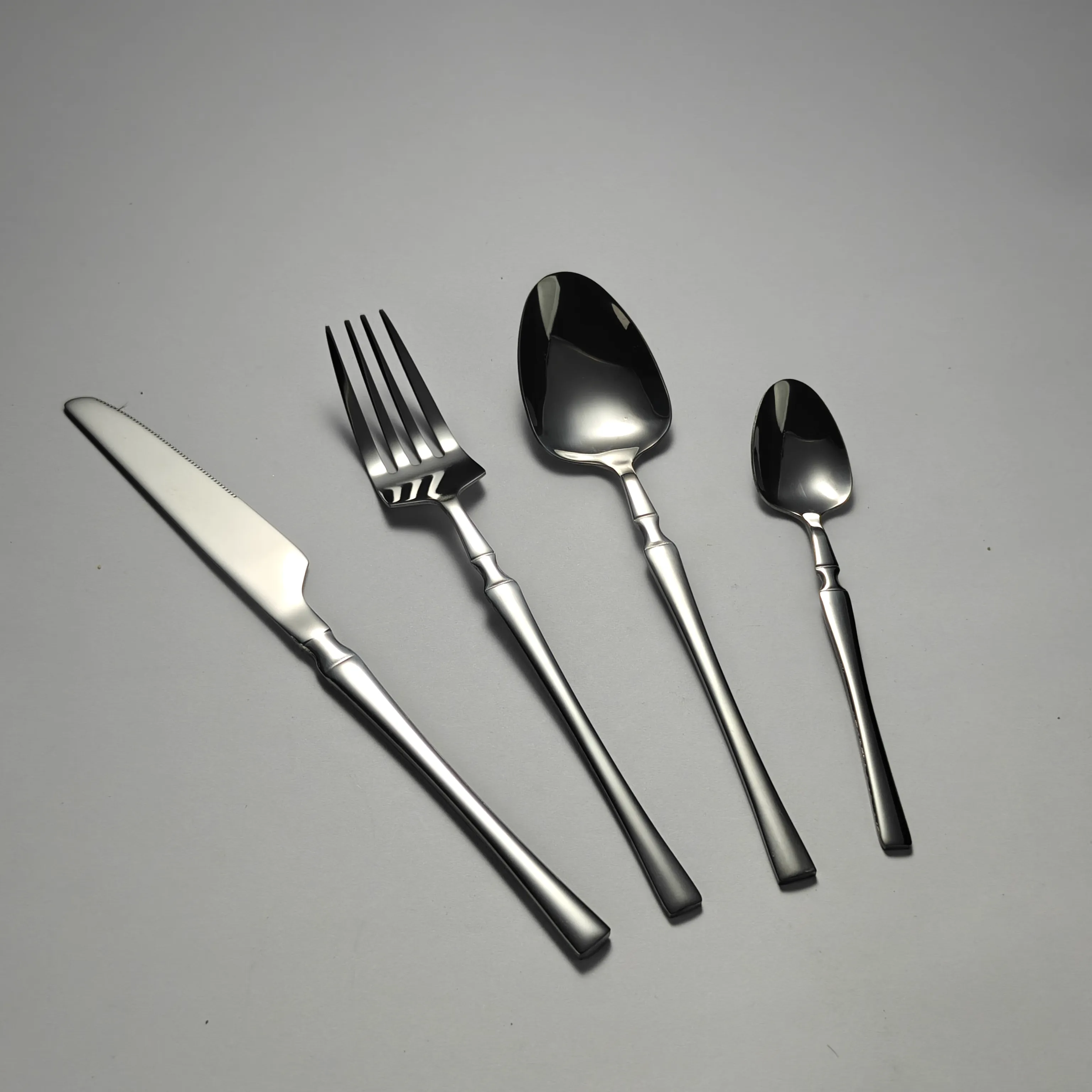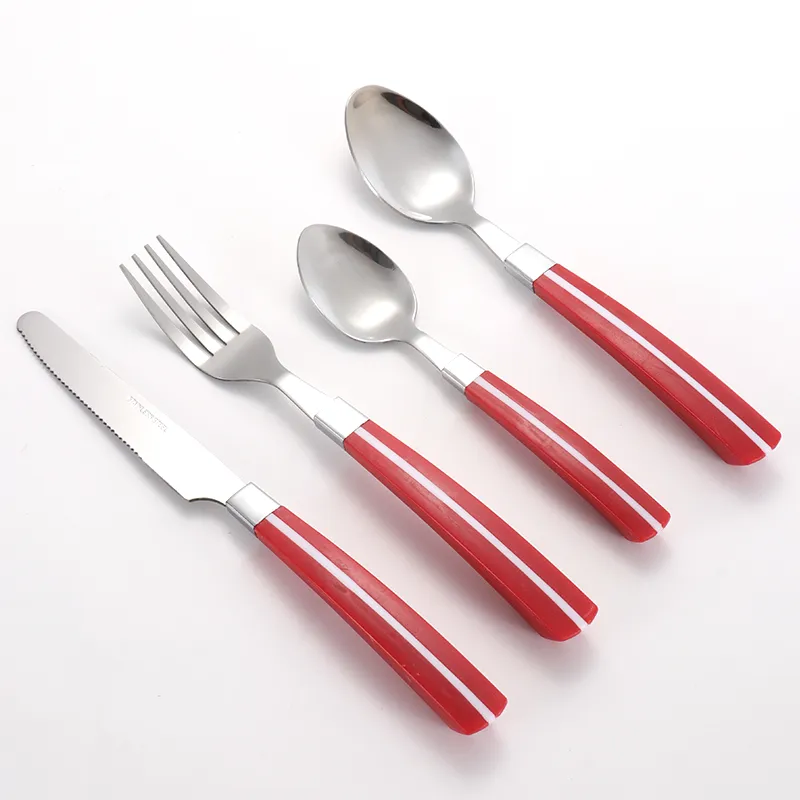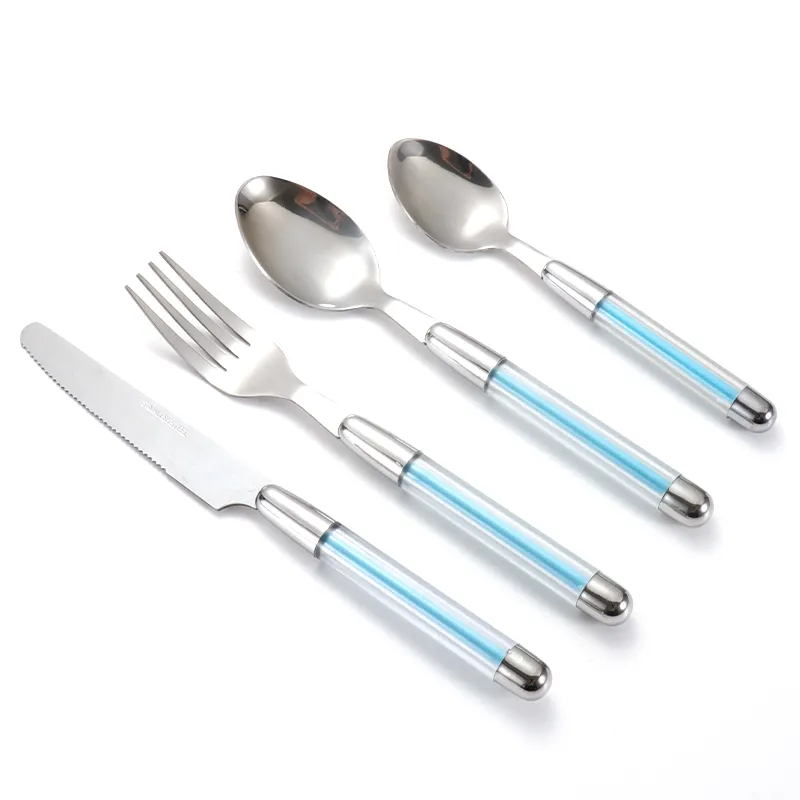When it comes to flatware, not all stainless steel is created equal. Choosing the right stainless steel grade for your utensils can make the difference between long-lasting, high-quality flatware and pieces that wear out quickly. In this guide, we’ll cover the key stainless steel grades, how to identify quality flatware, and tips for selecting the best metal for your kitchen.
Understanding Stainless Steel Grades
Stainless steel is classified into different grades based on its composition, durability, and corrosion resistance. The most common grades used in flatware include:
- 304ステンレス鋼: Known for its corrosion resistance and strength, 304 is a popular choice for everyday cutlery. It contains 18% chromium and 8% nickel, making it rust-resistant and safe for food contact.
- 316ステンレス鋼: Also called marine-grade stainless steel, 316 offers superior corrosion resistance due to the addition of molybdenum. It’s ideal for high-moisture environments but is more expensive than 304.
- 18/10, 18/8, 18/0 Stainless Steel: These numbers refer to the percentages of chromium and nickel in the steel. For example, 18/10 means 18% chromium and 10% nickel. Higher nickel content generally translates to a shinier finish and better resistance to rust.
Difference Between Stainless Steel Grades
Understanding the difference between grades is crucial when purchasing cutlery. While 304 and 316 may seem similar, their performance varies:
| Grade | Chromium | Nickel | Corrosion Resistance | Best Use |
|---|---|---|---|---|
| 304 | 18% | 8-10% | High | Everyday flatware |
| 316 | 16% | 10% | Very High | High-moisture or marine environments |
| 18/0 | 18% | 0% | Moderate | Budget-friendly cutlery |
Types of Flatware Metals
Besides stainless steel, flatware can also be made from:
- Silver: Traditional, luxurious, but requires regular polishing.
- Nickel Silver: An affordable alternative that mimics silver but contains no real silver.
- Carbon Steel: Strong and sharp, often used in specialty knives, but prone to rust.
- Plastic or Resin Handles: Common in casual or kids’ cutlery, often paired with stainless steel tips.
Knowing the metal composition helps you select utensils that meet your durability and maintenance needs.
How to Identify Quality Flatware
Not all flatware is created equal, even if it looks similar. Here are key factors to assess quality:
- Weight and Thickness: High-quality stainless steel is usually heavier and thicker. For example, 18-gauge stainless steel is a standard benchmark for durable flatware.
- Finish: Polished or satin finishes indicate different levels of craftsmanship. A smooth, even finish usually reflects better quality.
- Brand and Manufacturer Reputation: Trusted manufacturers often provide details on grade, composition, and care instructions.
- Corrosion Resistance: Check for 18/10 or 316 grades for the best rust resistance.
- Construction: Seamless, solid handles are more durable than hollow or welded designs.
Flatware Finish Comparison
The finish of flatware affects both aesthetics and maintenance:
- Mirror Finish: Highly reflective and elegant, but may show fingerprints more easily.
- Satin Finish: Smooth but matte, less prone to visible scratches and easier to maintain.
- Brushed Finish: Textured and contemporary, hides wear well.
Choosing the right finish depends on personal preference and the intended use.
Huashun: Your Trusted Flatware Manufacturer
At Huashun, we specialize in producing high-quality flatware, kitchen utensils, and food storage containers. Based in Jieyang, China, our 1,000-square-meter facility supports over 200 designs, exporting to 30+ countries. With 20+ years of experience, we focus on building lasting relationships with our clients, providing products that stand the test of time, not just one-off transactions. Whether you need kids’ dinnerware, premium cutlery, or durable food storage solutions, Huashun delivers quality and reliability every step of the way.

